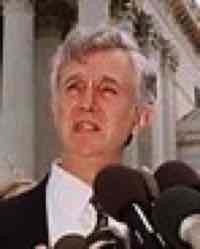SCALIA: Well, let - let's take a particular item of evidence, I mean, like the - the autopsy report that Mr. Favish claims was - was - was altered, that the word neck was white - whitened out and head was written in instead to - to cover the fact that the bullet exited the neck rather than the head. Now, you know, what - what he and other conspiracy theorists would say is, the fact that five investigations came up with the same conclusion just shows the extent of this - this conspiracy, you know. They're not going to be satisfied by the mere fact that - that you had five separate groups. They're going to say, oh, all the worse, all the worse, this - this conspiracy is so widespread. Well, how do you respond to that?
MR. HAMILTON: Well, I think the first response I would make is that it is a difficult argument to make that Judge Starr conspired with members of the Clinton administration to protect that administration.
(Laughter.)
MR. HAMILTON: Judge Starr - Judge Starr's report was quite thorough, it was over 110 pages. He answered this question about the - the - the medical report. The medical report was somewhat inconsistent, but certainly, when you look at the autopsy reports, when you look at the - the - the photographs themselves, it is clear that the - there-there was a-an exit wound in the back of the head. There was no -
SCALIA: He might have been protecting Newt Gingrich. Did you ever think of that?
MR. HAMILTON: I - I beg your pardon?
SCALIA: Mr. Starr might have been protecting Newt Gingrich. We really - we really don't know.
(Laughter.)
from Supreme Court official transcript
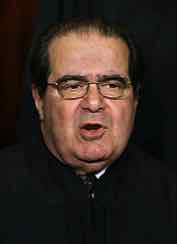
Justice Antonin Scalia and Vince Foster's Murder
Justice Antonin Scalia
Jim Hamilton
Justice Antonin Scalia and Attorney Jim Hamilton
Supreme Court Oral Argument on Allan Favish's FOIA request for release of crime scene photographs, December 3, 2003

Justice Scalia confused the medical examiner's report by Dr. Donald Haut with the autopsy report by Dr. James Beyer. Had Scalia even bothered to read Kenneth Starr's Report on Foster's death he would surely have known about the vital evidence of Foster's neck wound in the medical examiner's report and in the testimony of paramedic Richard Arthur, and he could not have failed to recognize its significance.
Scalia would also have known about the intimidation of grand jury witness Patrick Knowlton, who had inconveniently testified that Foster's car was not at the park when Foster was dead. He would have known as well that Foster did not own the gun said to have been found in his hand, that crime scene photos and x-rays had vanished, and that the FBI had obstructed justice. All of this information was ordered included in Starr’s report by the Special Division of the U.S. Court of appeals that appointed Starr.
Judge John D. Butzner warned his colleagues that they could be "charged as conspirators in the cover-up" if they did not deny Starr's bid to keep this information out of his report,. Consequently, they ordered the evidence of the cover-up to be included. Scalia, I suppose, would have people believe that Judges Butzner, David Sentelle, and Peter Fay were “conspiracy theorists.”
Scalia also repeated the popular error that there were five investigations. The only investigations were done by the FBI, first with the Park Police, then with Robert Fiske, and finally with the same FBI agents with Kenneth Starr. The Senate Banking Committee held hearings, but under Resolution 229, agreed not to investigate Foster's death. The other report that has been cited was the “Summary Report” authored by Congressmen William Clinger. This report was only 6 pages and was based on information supplied by the FBI, Fiske’s staff, and the Park Police.
Oddly attorney Allan Favish who argued in favor of the release of crime scene photographs of Foster seemed to be as ignorant about Starr’s Report as Scalia and attorney James Hamilton.
Hamilton said, “Judge Starr’s report was quite thorough, it was over 110 pages.” The report is in fact over 130 pages, 137 pages to be exact. Hamilton ignored the most significant part that Starr did not want to be included.
Responding to Scalia and Hamilton, Favish argued, “Mr. Starr ignored page 2 of the Haut [Medical Examiner] report. That’s one of the problems here.” But Starr’s Report does contain page 2 of the Chief Medical Examiner’s Report as “Exhibit 5.”
Favish incorrectly argued that, “there were major pieces of evidence omitted from” the Starr report. Starr was ordered to include evidence of the cover-up.
The inclusion of evidence of the cover-up in his report so troubled Ken Starr that he submitted a 9-page motion appealing the court’s decision. Starr conceded, “This court possesses the discretion under the statute to determine whether to include comments…” The “inclusion of Patrick Knowlton’s letter of September 23, 1997, in an appendix would not be appropriate,” Starr pleaded.
The three-judge panel rejected Starr’s pleading and ordered him to add Knowlton’s letter with supporting exhibits of government documents to his report. The attached evidence of the cover-up was ignored by the Supreme Court. Scalia, Hamilton, and Favish all discussed Starr’s report without appearing to know what was in it.
At his own website Favish published an article that clearly states, “…the court order forcing Starr to make Knowlton’s 20-page evidential filing legally as much a part of [Starr’s] Foster report as if it had been written by Ken Starr himself.” When given the opportunity to make this crucial point at the Supreme Court, Favish appeared to know nothing. Why?
Allan Favish

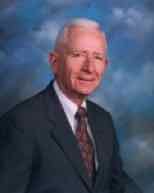
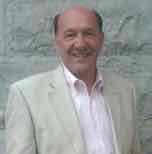
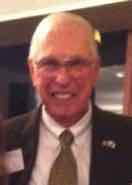
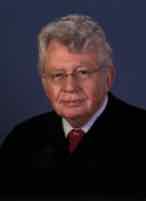
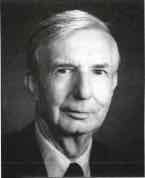

Dr. Donald Haut
Patrick Knowlton
Judge John Butzner
Judge David Sentelle
Judge Peter Fay
Rep. William Clinger
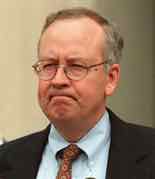
Ken Starr
The Undignified Way to Deal with a Serious Matter
Return to Inside Stories
Return Home
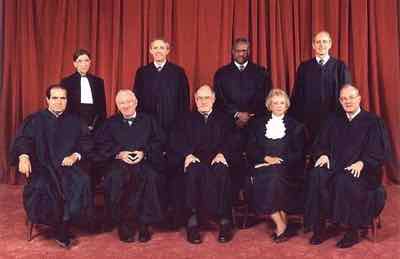
Supreme Court 2003
